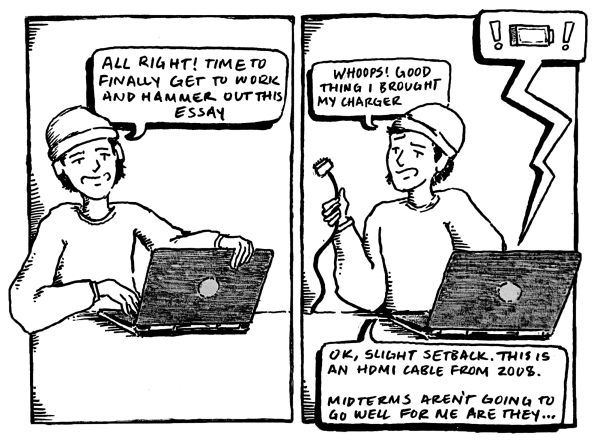Winter Term Changes Infantilize Students
Many students have not yet started the registration process for Winter Term, but many will find themselves amazed by the dramatic new changes implemented by the Winter Term Committee. Winter Term is one of the most unique facets of the Oberlin experience — a program that certainly attracts students to the College. Students can research, play, work, or pursue other activities to extend their learning outside of the academic course-load. Everyone around here knows that Obies run the gamut in terms of projects. From learning how to cook to surveying the Nile River in Cairo, Obies do it all.
And we’re thoughtful about it. While some students use Winter Term as a time to recoup from the stress of college life, many of us also use it to focus on personal growth and our collegiate promise. We use it to develop new skills, build our résumés, and discover unexpected passions.
However, several channels on campus have essentially assumed otherwise. With the adoption of the most recent Strategic Plan, Oberlin doubled down on the institutional emphasis of connected learning. In short, the connected learning model strives to blend traditional academic curricula with a student’s social life, post-graduation life, and a clear understanding of why it all matters and how it all connects. While this may sound good on paper — excellent, in fact — the true effects on college life can be seen in changes like that to the Winter Term registration process — an unnecessarily redundant and mildly patronizing process.
Students can no longer simply fill out a card and deliver it to the Registrar’s office. The process begins online at the Oberlin Study Away portal — a clunky site with several barriers to entry. After formulating an idea for a project, students then fill out an online form specifying logistical details of their project, such as where they will be and what they will be doing. The form must be printed, signed by the students’ advisors, scanned, and finally uploaded to the Office of Study Away.
While students — only recently introduced to these changes — have voiced objections and frustrations, faculty have as well. Some faculty members expressed irritation at having to sign multiple documents in order for a project to be approved. Similarly, some faculty members believe that they can and should be the arbiter of when a project is ready to be signed off on and submitted.
In the 1960s, Oberlin’s faculty asserted that the College was not to govern in loco parentis — in the place of a parent. This once-radical idea begins to dissipate in Oberlin’s application of a connected learning curriculum model — a model that can often be infantilizing. Students can make the important connections — we can conceptualize how our work inside the classroom relates to life outside the lecture hall. We don’t need that information spoon-fed to us, nor does it serve us well to be subjected to purposefully complicated registration procedures.
As an institution, Oberlin should be breaking down barriers to entry, not building them. We should make concerted efforts to ease the everyday lives and burdens of students. We owe it to ourselves to simplify our institutional processes, rather than complicating them.


